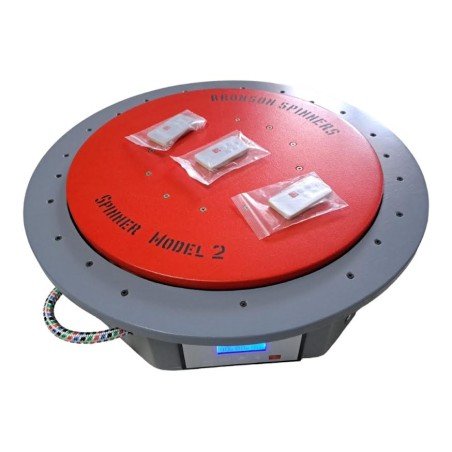






ELECTRIC SPINNER FOR FIGURE SKATING
ASK US BEFORE PURCHASE
Spinner for Figure Skating with motor - Bronson
Must be preorder this device we will advise of time to delivery
ELECTRIC SPINNER FOR FIGURE SKATING
Spinner for Figure Skating with motor - Bronson
Must be preorder this device we will advise of time to delivery
Training Apparatus -“Bronson Spinner”
The Simulator is intended for training vestibular stability. Increases the athlete`s ability level to multi-turn jumps. Main settings: The total diameter is 56 cm. The diameter of the rotating platform is 44 cm. Power Consumption is 300W. The supply voltage is 220V(or 110V). Fuse -5A. Maximum rotation speed- 8 revolutions per second.
Description of the simulator “Bronson Spinner” The main idea put into the training complex is that the training of the vestibular stability of the athlete takes place against the backdrop of an active motor process specific for figure skating. Rapidly reaching the peak of the angular velocity requires an exceptionally high level of development of the specific velocitystrength qualities of those muscle groups of the skater that participate in the grouping. Measurement of the power capabilities of individual muscle groups in highclass athletes has shown that a low level of development of speedstrength qualities of muscle groups that bring the hands and feet to the longitudinal axis of rotation is a serious obstacle in mastering multilateral jumps. The “Bronson Spinner” simulator refers to the field of training devices for the rotation of athletes.The idea is that the rotational energy of the engine is transmitted through the belt transmission to the rotating platform.
The simulator includes:
1. Direct current motor.
2. Drive pulley on the engine.
3. The bearing platform, connected to the driven pulley,
4. Engine speed control unit, connected to the rotation motor.
The simulator trains the following skills and qualities:
1. Creating a “rotational impact”. With this term it is expedient to create in the students a correct idea of the nature of the initial rotation and the beginning of the grouping in the leaps in figure skating. Not the beginning of the rotation and then the attraction of the hands and feet to the axis of rotation, namely the “impact”.
2. Perfection of the density of the grouping and its retention.
3. Work out the ungrouping. Recommended exercises the rotation on the longee in an unsupported position with the transition to the support, accompanied by a sharp and vigorous ungrouping.
4. Control over the fusion of rotational movements in the jump. To do this, imitations of rotation are used in nonice conditions.
5. Training of vestibular stability in complex positions of parts of the body and head.
6. Trimming of rotations on two legs, on one leg in various combinations.